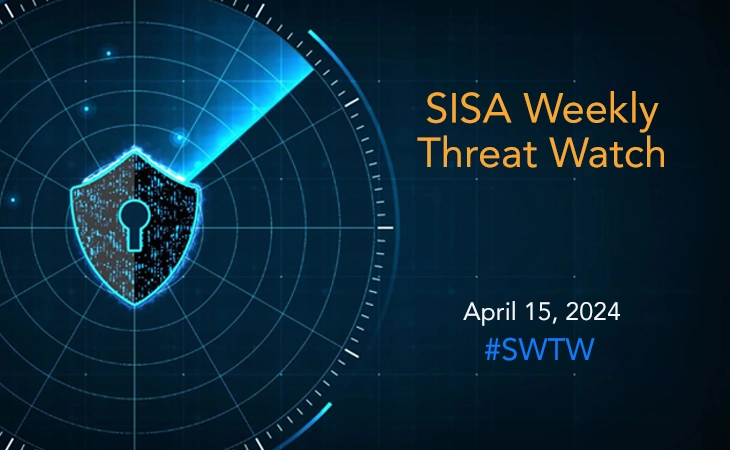
Cybersecurity awareness training – Challenges and Benefits
- February 8, 2023
The rapid acceleration of digitization and the disruptions caused by the ongoing pandemic have drastically affected the cybersecurity landscape in the past two years. Enterprises across the globe are confronted with new and evolving cybersecurity challenges, prompting them to implement advanced solutions to combat cyberattacks. However, equipping the employees with the best of the technologies is not enough. It is also essential to provide cybersecurity training to ensure that all the resources are utilized properly, and they yield the best results possible.
In addition to the increasing threat landscape, organizations also struggle with talent shortages, increased skill gaps, and vulnerabilities encountered due to remote working environments. According to a study by IBM, human error is considered the main cause of 95% of cybersecurity breaches1. As the human element is crucial to keep businesses safe, cybersecurity training for employees must be one of the top priorities for organizations to better combat cyber risks.
The need for cybersecurity training in tackling the evolving threats
With a shift to hybrid work environments, organizations started relying on technology for all internal as well as external operations in the past few years. As much as this benefited the companies to continue their businesses amidst the pandemic, it also opened new entry points for many attack vectors. In 2021, businesses suffered 50% more cyberattacks per week than the previous year2. The new workstyle enlarged the attack surface and made it easier for malicious actors to gain unauthorized access to the organization’s network.
The challenges confronted in the previous year acted as an opportunity for organizations to analyze the gaps within their system and devise proactive strategies to strengthen their cybersecurity posture. Some of those challenges are listed below:
- Cyberattacks are on the rise
The previous year witnessed a striking hike in the number of cyberattacks which are expected to be more rampant in the coming years. For instance, according to a 2021 report by International Data Corporation (IDC), 37% of global organizations admitted that they were a victim of some form of ransomware attack in 20213. In addition to that, the year also observed a rise in exploitation by supply chain attacks with Log4j zero-day vulnerability as one of the most recent ones. Enterprises also encountered an increase in the frequency of social engineering attacks with more than 80% of cybersecurity incidents occurring due to phishing attacks4.
A rapid shift to cloud-based infrastructure and services also surfaced new gaps to exploit for the hackers. Cyber threat actors are most likely to take advantage of these vulnerabilities with more targeted and systematic approaches. Further, the increasing number of connected IoT (Internet of Things) devices opens more access points for cybercriminals. All this and more contributed to recognizing 2021 as a record year for cyber breaches. Organizations need to be prepared with more effective and proactive strategies to combat such security incidents in the years ahead.
- Compliance and regulations catching up with the risks
With organizations struggling to protect critical data scattered across multiple systems, servers, endpoint devices, and cloud platforms, policymakers around the world have started developing more stringent data privacy and protection policies to step up the game. With highly exhaustive regulations like European General Data Protection Law (GDPR), Californian Consumer Privacy Act (CCPA), or Chinese Personal Information Protection Law (PIPL) coming into the picture, organizations will be confronted with huge penalties and reputational losses if they fail to implement the right information security practices. Organizations need to be prepared with strict measures and rigorous policies to prevent critical data loss and comply with the overarching norms of global data regulations.
Cybersecurity training: The key to a resilient organization
The complexities of cybersecurity space do not end at the high levels of increasing cyber-attacks but dive deeper into the capabilities of those who are responsible for implementing the best practices to avoid or recover from such attacks. It is vital to leverage automation tools and advanced technologies integrated with AI and ML solutions to build a resilient cybersecurity posture. Similarly, cybersecurity training programs help enhance the knowledge and skills of employees and prevent organizations from leaving any loose ends in maintaining a secure environment. Some of the challenges that reflect the need for cybersecurity training are mentioned below:
- Remote work security
Organizations have been confronted with new vulnerabilities with the onset of remote working environments. The widespread adoption of Bring-Your-Own-Device (BYOD) policies can lead to businesses losing visibility and control over the applications in use. Such devices have become the new target for malware with hackers taking advantage of weak security controls.
- Lack of knowledge
With the increasing prominence of cyberattacks in almost every industry, it is essential to inculcate cybersecurity awareness within the organization to build a robust security posture. Employees using weak passwords or falling prey to personalized phishing tactics can serve attackers with easy access to the organization’s critical systems and lead to severe data losses for the organization.
- Increasing skill gap
The talent shortage along with an increase in complex cyberattacks have resulted in widening the skill gap in the cybersecurity space. The shortage of skilled cybersecurity professionals and the emergence of new threats due to the adoption of advanced technologies can lead to increased risks of data breaches for organizations.
Benefits of Cybersecurity awareness training
Digital transformations have left organizations vulnerable to new and advanced forms of cyberattacks. With the evolution of security incidents in the past few years, arming employees with the latest cybersecurity skills can ensure efficient and long-term protection of data spread across the organizational environment. The advantages of cybersecurity training for executives include:
- Better security
The most recognized benefit of cybersecurity training is enhanced data protection and security. It equips the employees with the skills and knowledge of identifying, avoiding, and recovering from a cybersecurity incident. Training programs also prepare the professionals for upcoming cyber threats emerging from the increased adoption of the latest technologies.
- Empowered workforce
Cybersecurity training serves employees with improved skills, knowledge, and confidence to tackle security risks more effectively. As human errors minimize, productivity rates rise with reduced strain on IT teams of the organization. Instead of facing talent shortages and growing skill gaps, organizations can encourage the development of existing employees by equipping them with new skills.
- Effective compliance
With better skills comes improved cybersecurity practices which help implement the right measures required to meet regulatory compliance. Cybersecurity training gives professionals an in-depth understanding of data privacy and protection laws that contain complex requirements and helps organizations quickly meet their needs.
- Improved customer trust
Cybersecurity training improves the organization’s efficiency in protecting customer data from potential threats and improves the company’s reputation. A strong security culture assures customers that their sensitive information lies in the safe hands of skilled and qualified cybersecurity experts.
In today’s era of evolving cybercrimes and advancing technologies, organizations need to stay vigilant and well-trained for a safer and secure business environment. SISA – a forensics-driven cybersecurity expert, provides a wide range of training and certifications with its Payment Data Security Implementation Programs and Security Incident Detection and Response Programs Learning Sessions. With its forensics-driven learning approach, SISA aims to inspire and empower organizations to outpace expanding cyber threats and ensure right controls for better security and compliance.
References:
- https://blog.usecure.io/the-role-of-human-error-in-successful-cyber-security-breaches/
- https://www.darkreading.com/attacks-breaches/corporate-networks-saw-50-more-attacks-per-week-in-2021-
- https://www.techtarget.com/searchsecurity/feature/Ransomware-trends-statistics-and-facts
- https://spanning.com/blog/cyberattacks-2021-phishing-ransomware-data-breach-statistics/
Latest
Blogs
Whitepapers
Threat-a-Licious
Customer Success Stories
 USA
USA India
India APAC
APAC Middle East
Middle East Global
Global






 Facebook
Facebook Linkedin
Linkedin  Twitter
Twitter Youtube
Youtube








